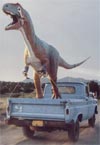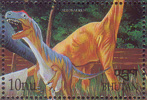ILLUSTRATION SOURCES
or
NEVER DRAW WHAT YOU CAN COPY
STAMP DESIGN
When called upon to design a set of prehistoric animal stamps, a designer has a couple of options.1) Study the subject matter himself (or herself),
2) Call in a specialist, and,
3) Copy illustrations from others.
In the more developed world, value is usually attached to quality stamp design, and design work is
generally done with appropriate care. The result is that designs based on original artwork tends
to be used, and that the design is in accordance with current ideas. When this is not the case,
commotion may result. Thus, the 1989 issue of four prehistoric animal stamps by the U.S.
Postal Service caused a stir, because the name Brontosaurus was used, even though
the correct name was by then known to be Apatosaurus.
The design quality of pictorial stamps, however, is not always that high, and artwork tends to be copied
without much thought. The designs of the very first pictorial set ever is based on reconstructions
by the Czech painter Z. Burian.
ARTISTS
Ever since the realization that species utterly unlike anything now living have existed, curiosity (both popular and scientific) has led to attempts to visualise these vanished creatures.
The American painter Charles R. Knight was not the first to produce reconstructions of extinct animals, but his well-researched work, based on his thorough knowledge of the anatomy of living animals, represents the birth of modern prehistoric vertebrate illustration. His article in the February 1942 issue of National Geographic was highly influential, as was his 1946 book Life through the Ages. He also produced a large number of paintings and murals that still adorn the walls of a number of American museums. Even though his works are now 50 to 100 years old, they have not lost their impact. For a long time, I have been looking for a book in which his works are reproduced, and now (november 2009) I have found one at last, Czerkas and Glut. With this book, I hope to find more stamps with Knight's works.
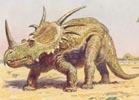
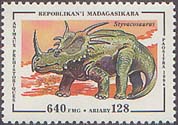
Probably the single most influential reproduction of prehistoric life is the mural 'The Age of Reptiles', by Rudolph F. Zallinger, at Yale University, U.S., completed in 1947. This huge painting depicts a host of animal species against a luxurious backdrop. Especially its swamp-bound 'Brontosaurus', reproduced on a 1970 U.S.A. stamp, is well known.
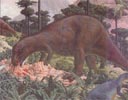
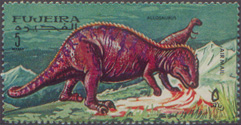
The abovementioned Czech painter Z. Burian created most of his best-known works in the nineteen forties and fifties. His cooperation with writer J. Augusta resulted in Tiere der Urzeit, translated into English as Life before Man. This book was one of the first well-illustrated and well-researched popular books on prehistoric life, and very influential, as the number of stamp designs based on his works clearly demonstrates.
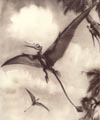
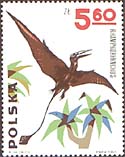
It was not until the nineteen eighties that a new generation of artists made its mark, but they had
timed their arrival well. Not only had many new fossil finds been made, old ones had been re-evaluated,
and new ideas on the anatomy, ecology, metabolism, and behaviour of prehistoric animals
(especially dinosaurs) had been put forward.
This resulted in a renewed popular interest, and a demand for
updated books.
John Sibbick illustrated Dr. David Norman's 1985 The Illustrated Encyclopedia of
Dinosaurs and 1994 Prehistoric Life, and Dr. Peter Wellnhofer's 1991
The Illustrated Encyclopedia of Pterosaurs.
David Lambert's The Ultimate Dinosaur Book (1993) is illustrated by, a.o. John Sibbick and Steve Kirk.
The Macmillan Illustrated Encyclopedia of Dinosaurs and Prehistoric Animals (1988, ed. B. Cox)
is illustrated by Colin Newman (fishes and amphibians), Steve Kirk (reptiles),
Malcolm Ellis (birds), Andrew Robinson and Andrew Wheatcroft (mammals).
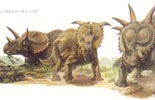


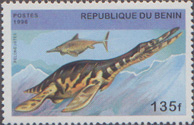
Of course, these are but a few of the better-known books on prehistoric life. And books are by no means the only source of illustrations. National Geographic has published a number of illustrated articles on dinosaurs and other prehistoric animals, and so have other periodicals. It is impossible to track down the sources of all copied stamp designs, but I keep on trying, as discovery is so satisfying.
